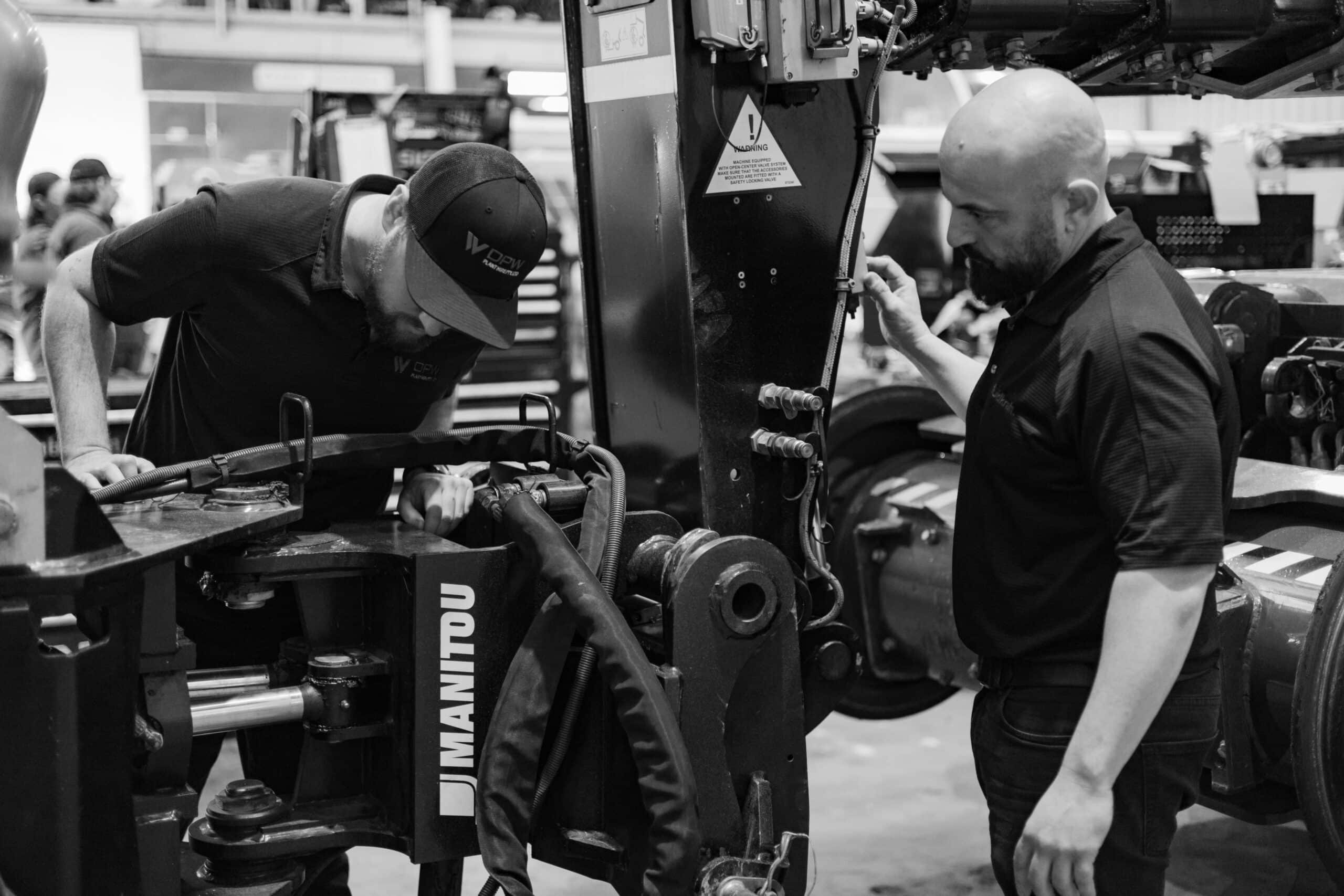Hydraulic cylinders are often referred to as the muscles of any hydraulic system. Without the hydraulic cylinder, it would be impossible to lift, lower, move, or lock heavy loads with ease. Hydraulic cylinders, also known as hydraulic rams, work by converting fluid power into mechanical energy. But how do hydraulic cylinders and rams harness this power?
How do hydraulic cylinders work?
A hydraulic cylinder gets its power from pressure, typically hydraulic oil. The cylinder consists of:
A barrel with a piston connected to a piston rod moves back and forth, and the barrel is closed on each end by the cylinder bottom, also known as the cap end, as well as the cylinder head.
The piston rod comes out of the cylinder head and divides the inside of the cylinder into two chambers: the cap end (also referred to as the bottom chamber) and the rod end (the piston rod side chamber). The hydraulic pressure then acts on the piston to initiate movement.
The hydraulic cylinder is the motor component of the system, and the generator side is the hydraulic pump, which brings in a fixed or regulated flow of oil to the bottom side of the cylinder, which then moves the piston rod upwards.
The piston pushes the hydraulic oil in the other chamber back into the reservoir. The piston moves downwards if oil is pumped into the piston rod side chamber, and the oil from the piston area flows back into the reservoir without any pressure.
What are the key components of a hydraulic cylinder?
Cylinder barrel
This is typically a thick-walled forged pipe that must be machined internally. The cylinder barrel is the outer casing of the cylinder and is usually made of strong materials such as steel so it can withstand high pressure.
Piston
This is a short cylindrical-shaped piece that fits inside the barrel and moves back and forth as the hydraulic pressure is applied. The piston is usually machined with grooves to fit metal or elastomeric seals, which can be cast iron rings, cup seals, or O-rings, which prevent the pressurised oil from passing by the piston to the chamber on the opposite side.
It is the difference in pressure between each side of the piston that causes the extension and retraction of the cylinder. A piston seal can vary in its design, and generally speaking, elastomeric seals are best because they can operate in lower-temperature environments, but cast iron piston rings are more suitable for higher temperatures.
Bottom or cap
In most hydraulic cylinders, the barrel and the bottom are welded together, and it can damage the inside of the barrel if not welded properly.
Cylinder head
The cylinder head can be connected to the barrel with a lock, but generally, the connection is screwed or flanged, which means that it’s welded to the pipe before machining.
Piston rod
This is typically a chrome-plated piece of cold-rolled steel that attaches to the piston, extending from the cylinder through the rod and head. The piston rod connects the hydraulic actuator to the machine components performing the work, which can either be a mounting attachment or a machine thread.
Rod gland
The hydraulic cylinder head is fitted with seals to prevent pressurised hydraulic oil from leaking past the component between the rod and the head.
What are hydraulic rams?
While hydraulic rams can be used interchangeably with the term hydraulic cylinder, a hydraulic ram is generally designed for tasks that require a significant force over a short distance, for example, pushing or pulling heavy loads, which demands incredible power. You can find these in hydraulic presses, agricultural machinery, and construction equipment.
What are the best ways to maintain hydraulic cylinders and rams?
It’s essential to ensure that they operate efficiently and effectively, and it’s important to do some of the following:
Change the hydraulic fluid
When it comes to hydraulic system repair, regularly changing the fluid and using the recommended type for your equipment is best.
Regular inspections
If you are using custom hydraulic cylinders, the best approach is to work with the supplier to keep it up to code. However, you can always conduct regular inspections for damaged seals, worn-out components, or any leaks.
Using any custom-made hydraulic cylinders can ensure greater efficiency across the board. But for the sake of harnessing hydraulic power, it is critical to ensure that you do a job well. This is where Fluidkraft will always work with you to ensure that your custom hydraulic cylinders go the distance. Fluidkraft manufactures and repairs custom-made hydraulic cylinders to the absolute pinnacle of quality, durability, and reliability.


